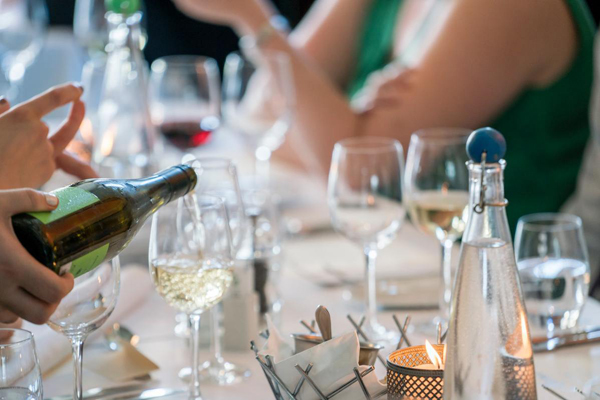中国酒文化 Chinese drinking culture

Drinking is associated with maintaining social connections. [Photo/Pexels]
Living in China, you've probably already had a chance to drink with your Chinese friends, colleagues, or classmates. Drinking is such an integral part of Chinese culture (as it is of many cultures, really!), and it traces back thousands of years.
How much do you know about the drinking culture in China? Let's look at some key points.
The Chinese character for "alcohol" 酒
First, let's explore the Chinese character that represents wine and liquor.
酒
jiǔ
wine; spirits; liquor; alcoholic beverage
It's made of two parts:
氵on the left — "water" radical
酉 on the right — "wine vessel"
Quite descriptive, isn't it?
Note:
When used on its own, the word 酒 (jiǔ) usually refers to hard liquor and rice wine. It doesn't refer to beer or wine, which go by their own names:
啤酒
pí jiǔ
beer
葡萄酒
pú tao jiǔ
wine
1. Origins of 酒 (jiǔ)
Up to 9,000 years ago, Chinese people started making and consuming alcohol during ritual gatherings.
Since it was way before any recorded history, this assumption came from unearthed ancient pottery. Researchers discovered early beers in the area of modern China, made by the Neolithic people from rice, honey, and grapes.
2. Evolution of 酒 (jiǔ)
Since then, alcohol has become a staple for Chinese families during celebrations and ceremonies, to worship ancestors and gods, and for medical purposes. Some types of Chinese liquor are also used in cooking.
And of course, just like in most parts of the world, Chinese people drink alcohol to celebrate memorable occasions, socialize, or simply to complement a nice meal.
3. When do people drink?
Different types of Chinese liquor (depending on their strength) can be consumed at dinner or lunch. Normally Chinese people won’t drink on an empty stomach (空腹喝酒, kōng fù hē jiǔ), so alcohol is consumed with meals.
4. Hot or cold?
Chinese 酒 (jiǔ) can be warmed up before drinking. Warming it up will allow you to appreciate its aromas more, without losing too much taste. The temperatures vary based on type (and also on your preference) but the average is between 30 and 50 C.
5. Drinking etiquette (酒桌礼仪, jiǔ zhuō lǐ yí)
Volumes have been written on Chinese dining and drinking etiquette. If you are drinking with Chinese business partners or colleagues, here are a few general tips to be aware of:
Beginning:
Wait for others to give a toast before you start drinking.
Toasting: (敬酒, jìng jiǔ)
If you wish to deliver a toast, do so while standing and holding a cup with both hands (敬酒时,要起身双手托起酒杯 jìng jiǔ shí, yào qǐ shēn shuāng shǒu tuō qǐ jiǔ bēi).
Holding the glass: (举杯, jǔ bēi)
Make sure you hold your cup lower than the cup of your host (举着的酒杯要低于对方酒杯, jǔ zhe de jiǔ bēi yào dī yú duì fāng jiǔ bēi). It's a sign of respect and gratitude.
5 Common types of 酒
米酒
mǐ jiǔ
rice wine
黄酒
huáng jiǔ
huangjiu; mulled rice wine
(lit. "yellow wine")
白酒
bái jiǔ
baijiu
(lit. "white wine")
马奶酒
mǎ nǎi jiǔ
kumis
(lit. "horse milk wine")
药酒
yào jiǔ
medicinal liquor; medicine wine
The list can go on and on! There are more regional types of 酒, such as osmanthus-scented wine (桂花酒, guì huā jiǔ) and Tibetan highland barley wine (西藏青稞酒, xī zàng qīng kē jiǔ), as well as variations within each category.

